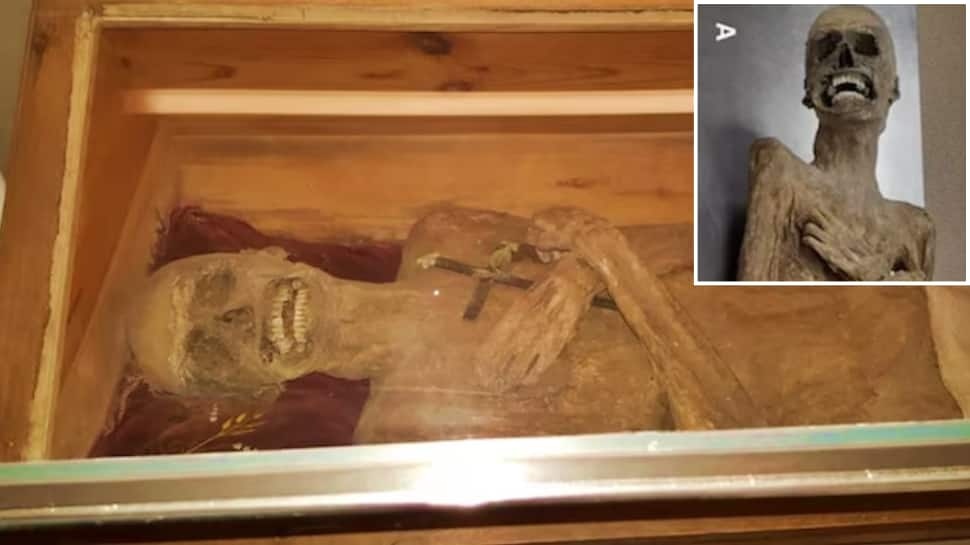In the quiet village of St Thomas am Blasenstein in Austria, an eerie discovery inside a church crypt has stunned scientists and historians alike. A 279-year-old mummy, preserved with astonishing detail, has revealed a rare and unconventional method of embalming — unlike anything seen before in Europe.
The mummy belongs to Franz Xaver Sidler von Rosenegg, a parish vicar who passed away in 1746. His body lies in a crypt beneath the church, untouched by time — skin, organs, and even tissues preserved with such precision that researchers were compelled to investigate the secret behind his incredible state.
For years, experts have studied the ways in which ancient civilisations preserved their dead — from Egyptian mummies to South American rituals. But this Austrian case, recently published in Frontiers in Medicine, may open a new chapter in the science of human preservation.
Dr Andreas Nerlich, a pathologist at Ludwig-Maximilians-University in Munich and lead author of the study, explained the team’s findings:
“Our investigation uncovered that the excellent preservation status came from an unusual type of embalming, achieved by stuffing the abdomen through the rectal canal with wood chips, twigs and fabric, and the addition of zinc chloride for internal drying.”
Unlike classical embalming methods where the body is cut open to remove organs, this technique used natural absorbent materials — like fir and spruce wood chips, fragments of branches, and layers of linen, hemp, and flax — inserted rectally to dry the internal cavity without incision. CT scans revealed a preserved upper body while the lower limbs and head showed signs of post-mortem decay, further confirming the localized drying effect of the materials used.
Interestingly, researchers also discovered a small glass sphere with holes on both ends — likely a monastic object — placed inside the corpse. While its purpose remains unclear, it adds to the mystique of the burial ritual.
The identity of the mummy had long been suspected to be Sidler von Rosenegg, but it wasn’t until this investigation that the confirmation came. Biological analysis dated the individual’s death between 1734 and 1780, with an estimated age at death between 35 and 45. The skeletal remains showed no signs of hard labor — consistent with the sedentary life of a priest — but did reveal two notable health issues: evidence of a long-term smoking habit and the presence of lung tuberculosis.
Dr Nerlich believes this unconventional preservation technique might have been more widespread than previously believed but went unrecognized due to post-mortem decay in other mummies that obscured the evidence.
This case presents a fascinating new perspective on burial traditions in 18th-century Europe and raises broader questions about how local materials and beliefs influenced preservation practices outside of the more widely studied Egyptian and Peruvian contexts.
As scientists continue to study such rare finds, the mystery of ancient mummification methods only deepens — reminding us that even centuries later, the dead still have secrets to reveal.

